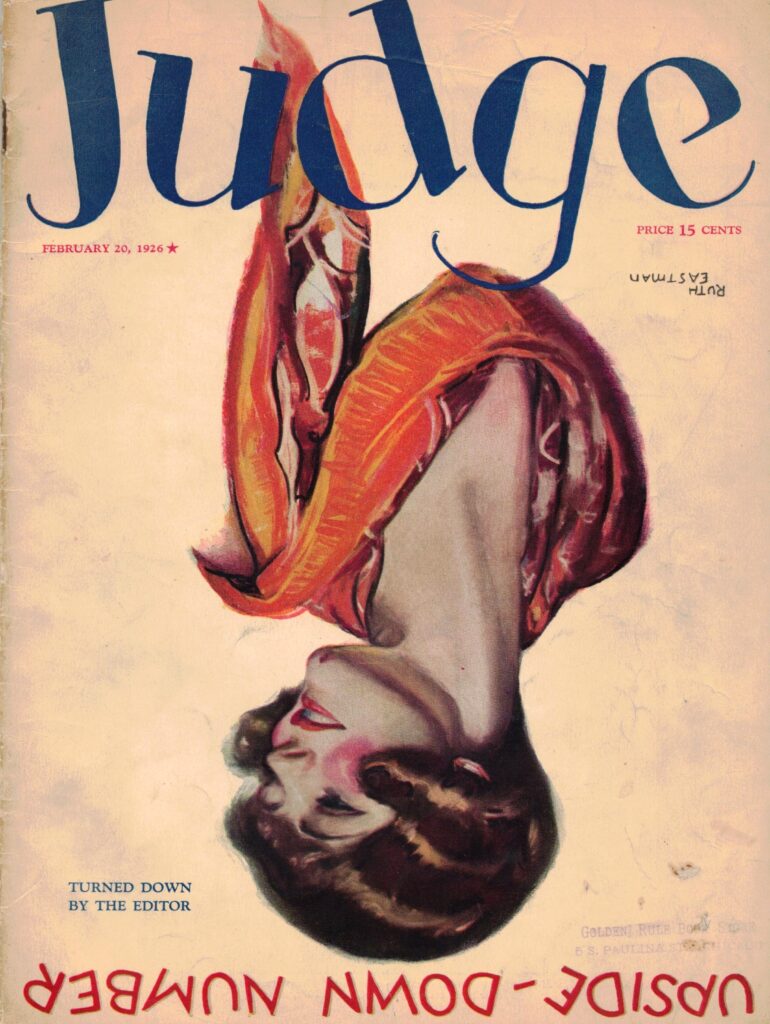1926 Judge - Upside Down issue
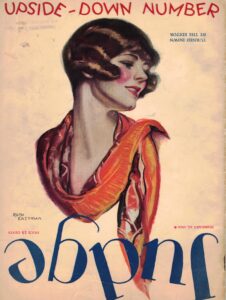
This week I selected an odd magazine that we have in stock at PFTP Antiques. It is the February 20, 1926 upside down issue of Judge magazine. Judge was a satirical magazine that initially was published weekly in the United States. The publication ran from 1881 to 1947.
This is the advertisement post, so we are specifically looking at some of the ad content within this magazine. Let’s see what products were on the scene in the 1920’s!
Seasickness, Bitters and Cigars
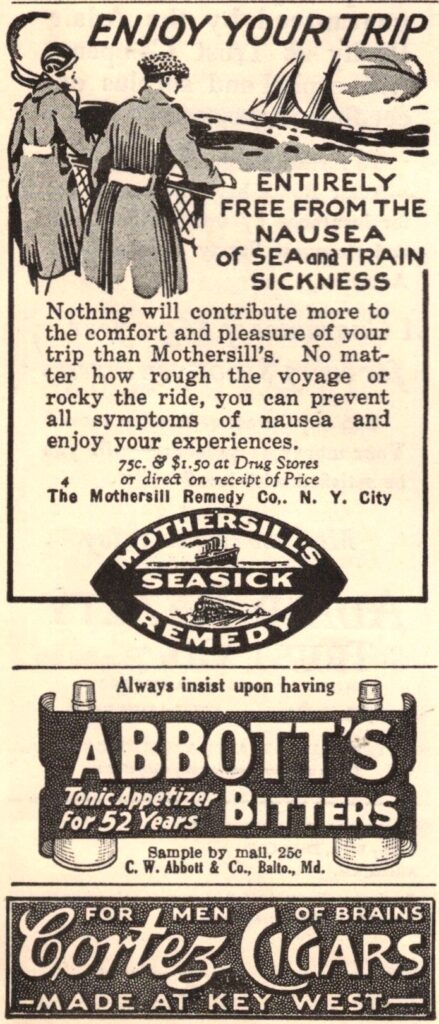
In the 1920’s there wasn’t yet a consensus regarding the cause of seasickness. A couple researchers at the University of Chicago Medical School noticed that use of sodium nitrate to lower blood pressure reduced the feelings that people associated with seasickness. This had only been tested in the lab until one of the researchers used an ocean liner as his lab during a trip to Europe. He recruited 16 passengers who were suffering from seasickness. Eight passengers received sodium nitrite every two hours and the other eight received no treatment. The passengers receiving sodium nitrate were all relieved of their symptoms.
Mothersill’s used a different set of ingredients for their remedy. It included about 45% Chlorobutanol, a cocaine substitute that was often used as a local anesthetic. Chlorobutanol has also been found to be toxic to the liver and a skin and eye irritant.
I’m not much of a cocktail enthusiast, but I’m sure that I’ve heard something about bitters being used in drinks. Abbott’s Bitters ceased to be produced at some point in the 1900’s and the original recipe was lost. However, thanks to some hard work and the study of original contents from unopened bottles, Abbott’s Bitters has been recreated under the name of Bob’s bitters.
The cigar industry in Key West made over a hundred million cigars per year in the late 1800’s and early 1900’s. Cortez Cigars was one of the large producers responsible for part of the Key West production.
From Neet to veet
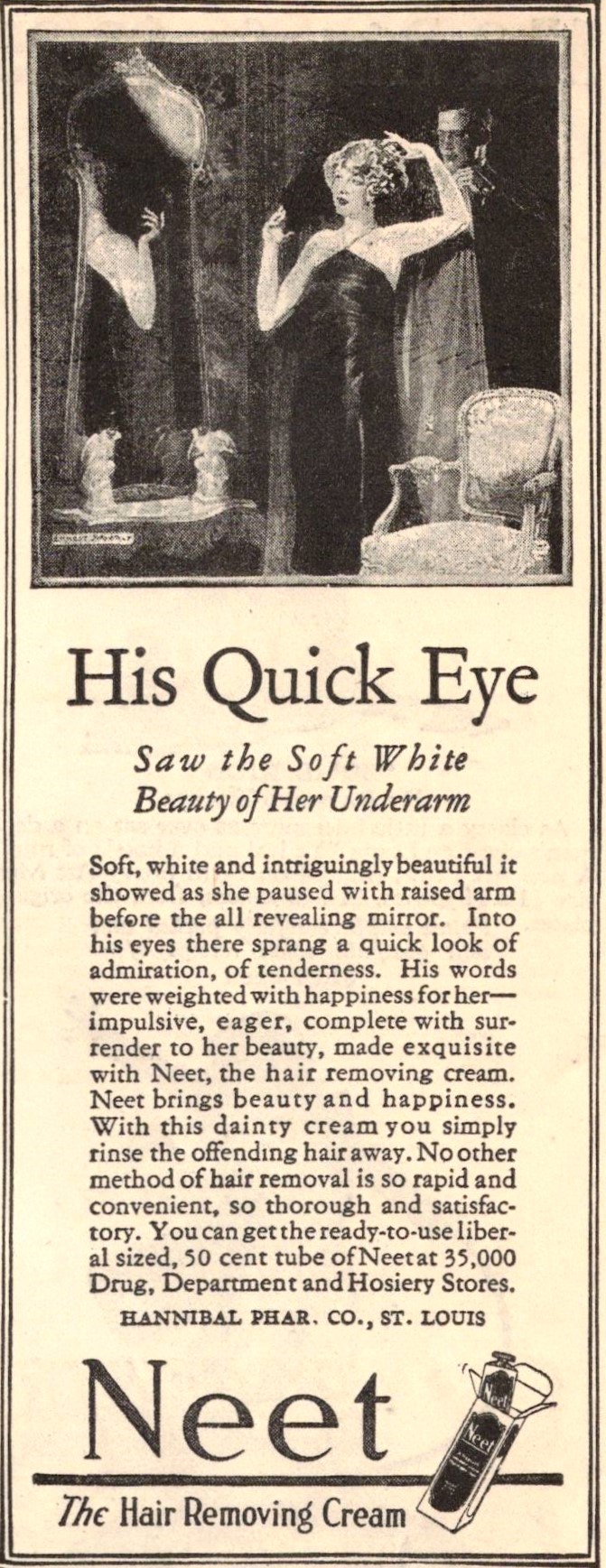
Neet – Known today as Veet, is still regularly used as an alternative hair removal option instead of shaving.
Bitters again, Cartooning and an invisible hearing aid
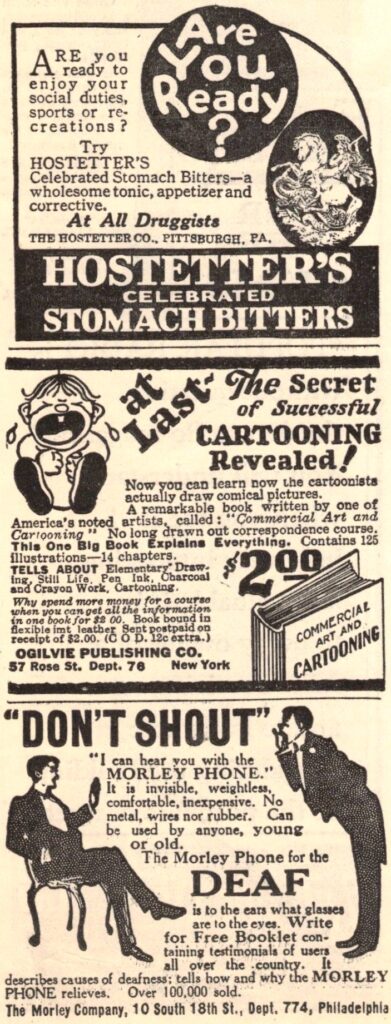
Another bitters option available in the 1920’s. During the AMERICAN CIVIL WAR, Dr. J. Hostetter’s “Celebrated” Stomachic Bitters was rationed to UNION SOLDIERS. It became very popular and is still available today.
The secret of successful cartooning would be an interesting book to have today. We had a couple very old drawing books in our shop for a while. At least one of them found a new home very fast.
I couldn’t find much information on the Morley Phone, so I initially suspected that it may have been a version of electric hearing aid that was available in the 1920’s. These hearing aids used an external power source and based off telephone technology. However, the advertisement says that this device was invisible, weightless and had no metal, wires or rubber. I’m very curious what this devise looked like and how it worked.
Forhan's for Gums
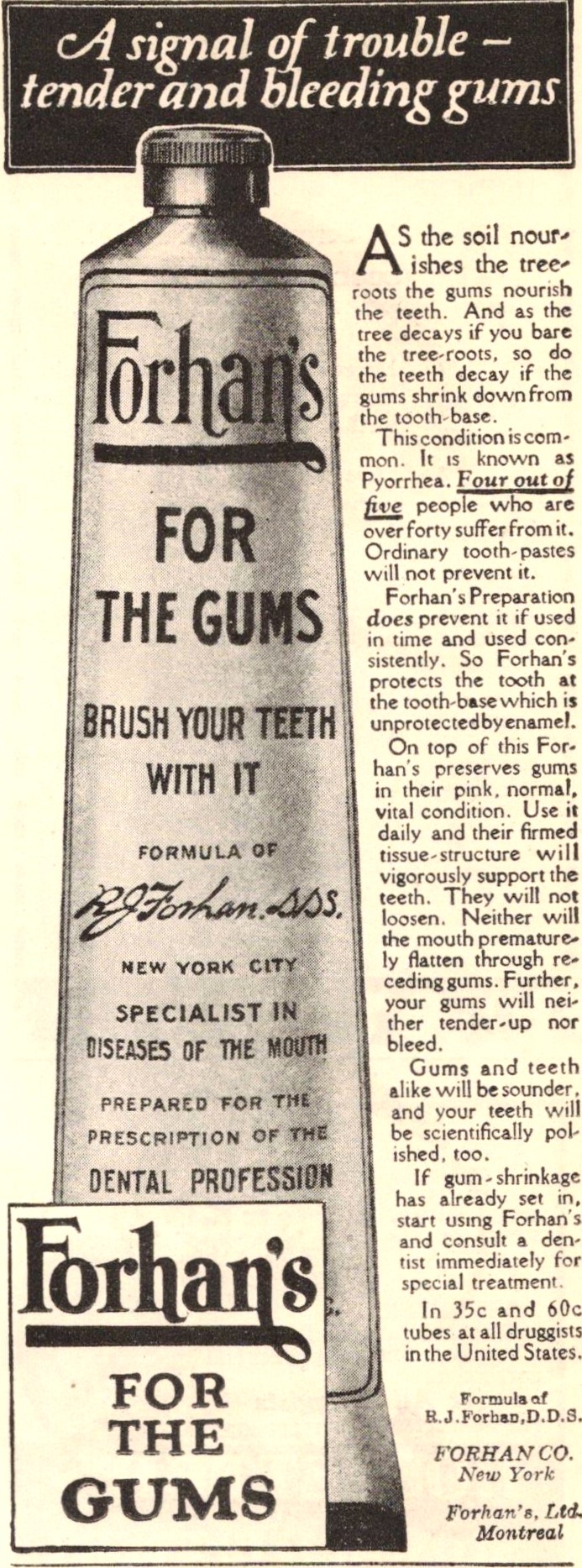
The Forhan Company was founded in 1913 by Richard J. Forhan in Brooklyn, New York. Although I’ve never heard of it, this company is still producing similar products today.
Fleur D'or, Pocket adding, and the perfect nose.
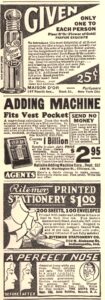
Fleur D’or sounds good, but it seems like you would have been taking a chance buying perfume out of a magazine without having first checked out the smell.
These pocket adding machines were invented in the mid 1800’s, but really became popular in the 1920’s when they were able to be manufactured at lower cost. Many versions were available and this Ve-Po-Ad (Vest Pocket Adder) machine was among the common brands available. These machines were popular up until modern electronic calculators took over in the 1970’s.
I’m skipping over the stationary because it is stationary, and I’m more interested in the perfect nose devise. I guess people in the 1920’s were very similar to people today in some ways. They had their images of perfection pushed on them and companies tried to take advantage with all kinds of products. If you find it hard to believe that people ever bought a device like this to try and reshape their noses, then you may be surprised that there are still similar products on the market today.
If only she could smoke a pipe
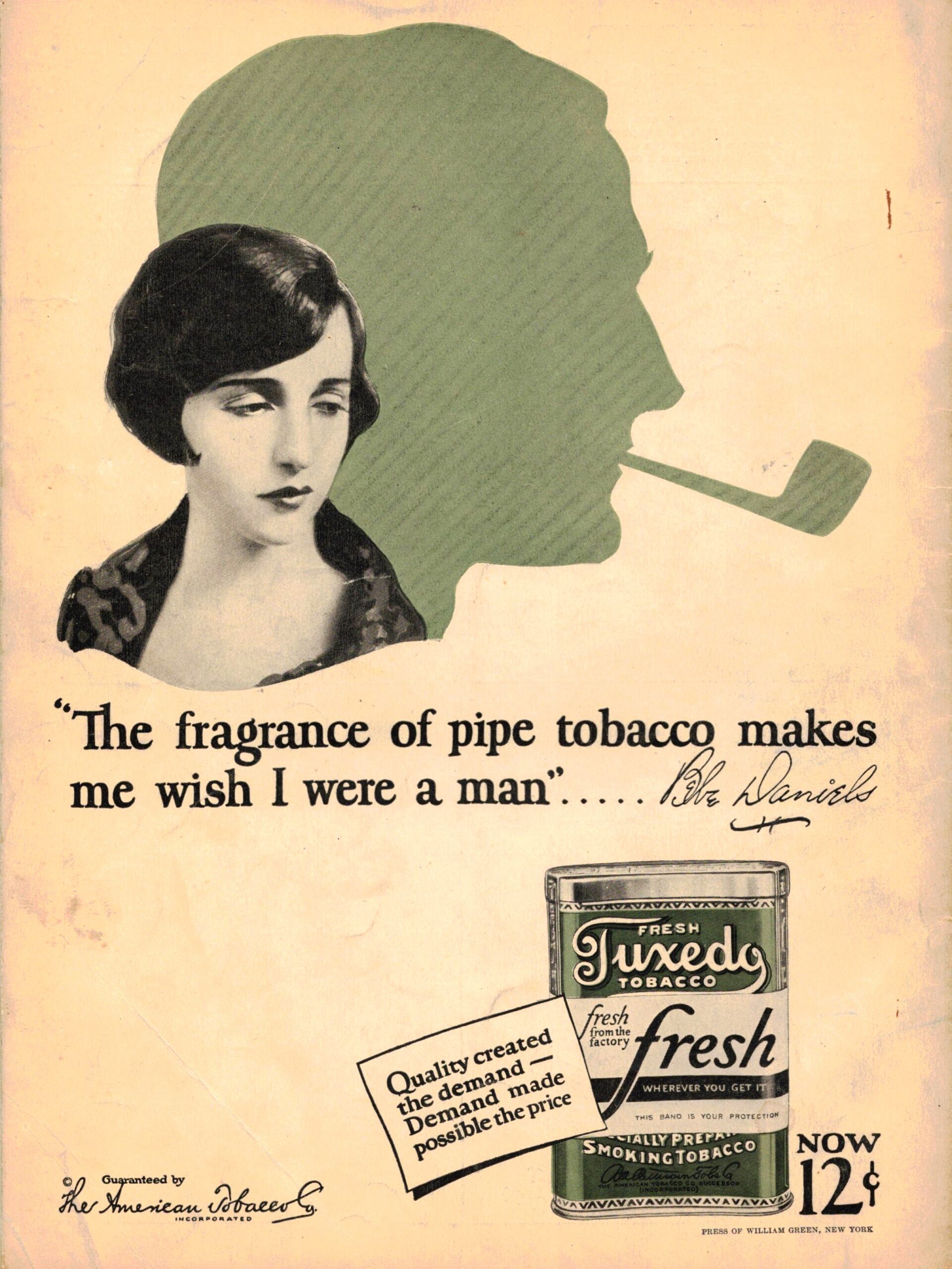
The woman from this advertisement looks so sad that she is in a world where she can’t smoke a pipe. Maybe she was just born too late. Female pipe smokers were much more common in the 17th and 18th centuries. Of course, she may be delighted to try some of the many vape flavors available today.
If you liked the advertisements in this February 20, 1926 issue of Judge magazine, please let us know. We would like to read your comments and see what you think of the advertised items.
If you find our posts interesting, please follow us on Pinterest or X to see when we add new content, new products in our shop or start a sale. You can also visit and follow our shop PFTPAntiques directly to see our more of our inventory.
